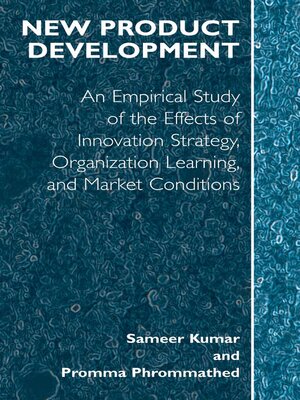New Product Development
ebook ∣ An Empirical Approach to Study of the Effects of Innovation Strategy, Organization Learning and Market Conditions
By Sameer Kumar

Sign up to save your library
With an OverDrive account, you can save your favorite libraries for at-a-glance information about availability. Find out more about OverDrive accounts.
Find this title in Libby, the library reading app by OverDrive.



Search for a digital library with this title
Title found at these libraries:
| Library Name | Distance |
|---|---|
| Loading... |
The challenge of managing a business enterprise today is to ensure that it can remain efficient and competitive in a dynamic marketplace characterized by high competition, unstable demands, heterogeneous market segments, and short product life cycles. Increasing the pace of new product introduction enables dealing with shorter product lives. To sustain competitiveness, a firm has to be innovative as well as quick to respond to the changing customer needs in order to provide better and faster products to market than competitors. New product development (NPD) is considered as a process of learning. Successful NPD projects typically rely on knowledge and experience of multi-function teams. In addition to corporate strategy and organization learning, the external factors such as, market and competitive conditions also play a big role in driving business strategies. The results from the empirical research study reported shows that companies implementing innovation strategy are more competitive in the long run while those that follow customer-responsive strategy are more likely to have higher return on investment within a shorter time. In order to achieve both sustainable competencies and also meet customer needs in the changing market environment today, a company should adapt to the benefits of both strategies.







